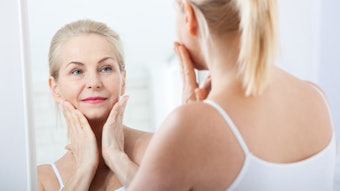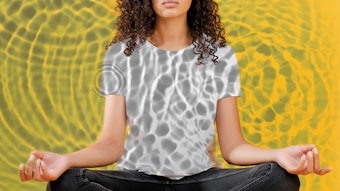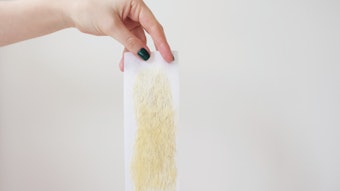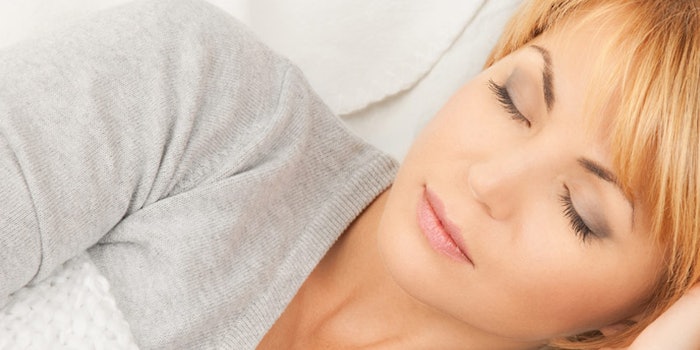
We’ve all heard the expression “beauty sleep,” but is there anything behind these words? Does getting adequate rest really help us look better? The answer is yes, and it goes beyond the obvious dark circles that show up under our eyes when we don’t get enough rest.
Cell Regeneration
Up until a few years ago, the idea that sleep deprivation made us age faster was just speculation. That was until 2013, when a group of physician-scientists at University Hospitals (UH) Case Medical Center conducted a clinical trial aimed to prove that sleep quality impacts skin function and aging. Their findings showed that poor sleepers had increased signs of skin aging and slower recovery from a variety of environmental stressors, such as disruption of the skin barrier or ultraviolet (UV) radiation. Given that our skin functions as a first line of defense against external stressors such as environmental toxins and sun-induced DNA damage, this was a significant revelation
Specifically, the researchers found that good quality sleepers recovered more efficiently from stressors to the skin. Recovery from sunburn was more sluggish in poor quality sleepers, with erythema (redness) remaining higher over a 72-hour period, indicating that inflammation is less efficiently resolved. A transepidermal water loss (TEWL) test was used at various time points to determine the ability of the skin to serve as an effective barrier against moisture loss. In measurements 72 hours after a skin barrier stressor (tape-stripping), the recovery of good quality sleepers was 30% higher than poor quality sleepers, demonstrating that they repair the damage more quickly.1
This makes sense when you stop to think about it. Cell turnover and regeneration occur during our sleep. This happens for all cells including the cells that support our skin renewal. When we skimp on sleep, we do not allow for our skin to be renewed and refreshed, leading to dull, damaged skin cells.
Cortisol Production
Skin regeneration and TEWL are not the only areas affected by lack of sleep. It can also increase our cortisol through disruption of the hypothalamic-pituitary-adrenal (HPA) axis.
The HPA axis is an adaptive system with the purpose of maintaining a dynamic equilibrium or homeostasis in the constantly changing hormonal environment of our bodies. Sleep is regulated by the HPA axis in multiple ways, and a growing body of research suggests reciprocal associations between sleep and the activity of the HPA axis. The circadian rhythm of cortisol secretion has a waveform pattern, with the low point for cortisol occurring at about midnight. Cortisol levels start to rise approximately two to three hours after sleep onset and continue to rise into the early morning. The peak in cortisol is about 9 a.m., and as the day continues, levels decline gradually. With the onset of sleep, cortisol levels continues to decline until they hit the low point again.2 When one does not get enough sleep, they disrupt the decline part of the cycle, and elevated cortisol is experienced.
Why is this significant? Elevations in cortisol do two things. First, it signals your sebaceous glands to produce more oil, which leads to oily skin, acne and inflammation. The extra cortisol also causes a biochemical reaction that depletes your C and B vitamin stores. Vitamin C is essential for collagen formation; therefore, skin becomes less elastic forming more wrinkles over time. Additionally, the hormone melatonin is released during sleep and counteracts the effects of extra cortisol production. Less sleep time means less melatonin production and more damage to the skin’s infrastructure.
Optimal Sleep Levels
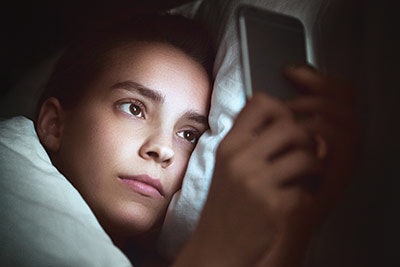
The connections presented here between sleep and skin aging are supported with solid scientific data and prove that lack of sleep has a profound effect on how our skin functions. For many of us, it seems that there are just not enough hours in the day to get everything done, so we sacrifice sleep. The right amount of sleep varies by the individual. There are a few, rare people who can live healthfully on very little sleep; on the other end, there are some who need 10 or more hours per night to function. On average, humans need six to eight hours of sleep per night.
Tips To Better Sleep
Below are some tips to help ensure that when you do retire for the night, you get a high-quality sleep.
Temperature. Maintain ideal sleeping temperature of 62-68°F. Too hot or cold disrupts sleep.
Schedule. Follow the same sleep schedule every day. Try to follow your body’s cues in addition to the natural daylight, sleeping after dark and waking with the sunrise.
Electronics. Get electronics out of the bedroom; it should be for sleep and sex only. Lights and electromagnetic fields (EMF) can disrupt sleep cycles.
Snacks. Have a protein snack two hours before bed and no liquids two hours prior to bed to avoid getting up to urinate during the night.
Magnesium. Try a magnesium soak before bed. Magnesium is a natural muscle relaxer and sleep aid, and it can be found in epsom salts. Add a few drops of lavender oil for a relaxing bedtime bath. If you don’t like baths, you can try taking 100-300 mg of magnesium glycinate before bed.
Journal. Keep a journal next to your bed and transfer your to-do list and stressful thoughts to the journal to be dealt with the next day. Don’t let these thoughts keep you awake.
Prioritize Sleep
Make it a priority to take time for rest so you can provide your skin with adequate hours for regeneration and proper hormone signaling. Sleep is yet another pillar in the foundation of healthy skin, along with nutrition, topical products and stress management. The holistic approach is best every time.
References


